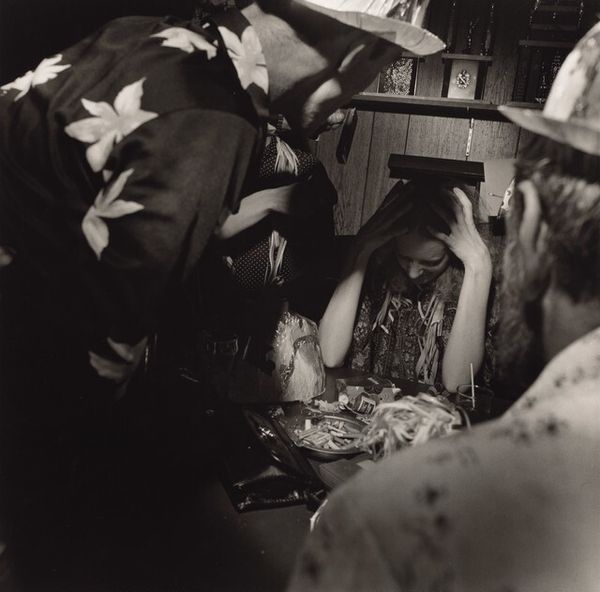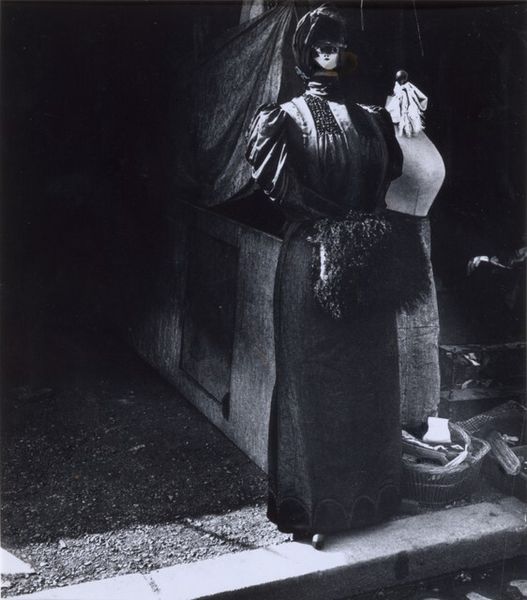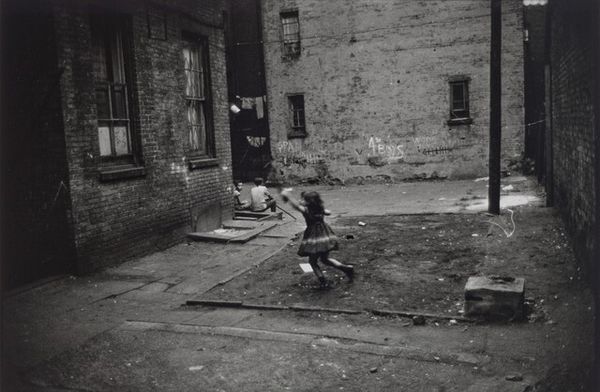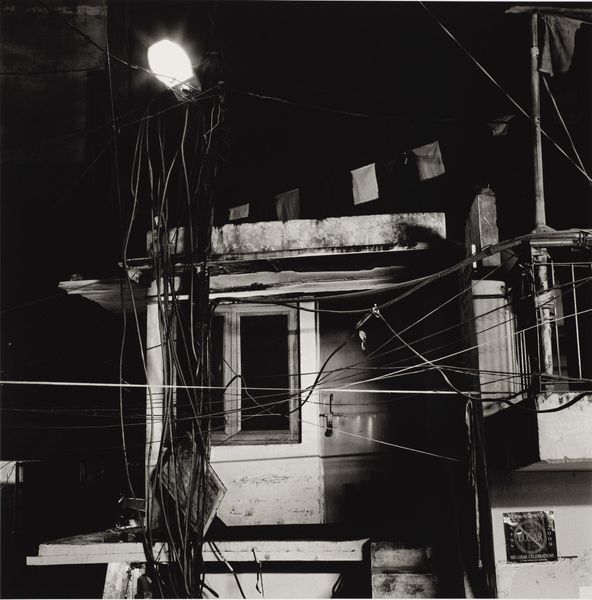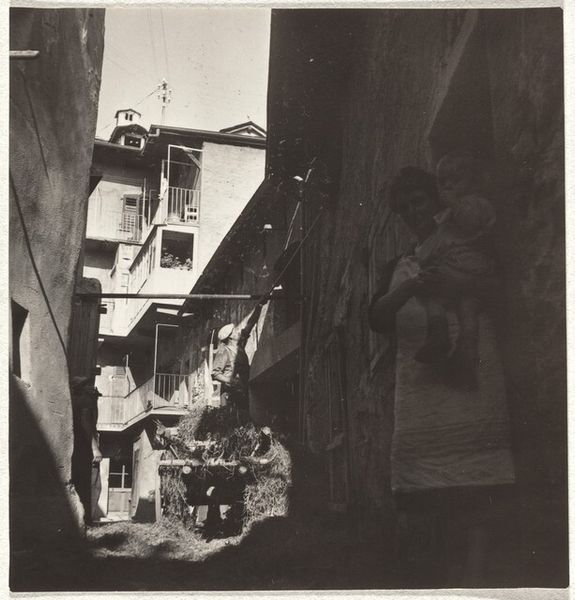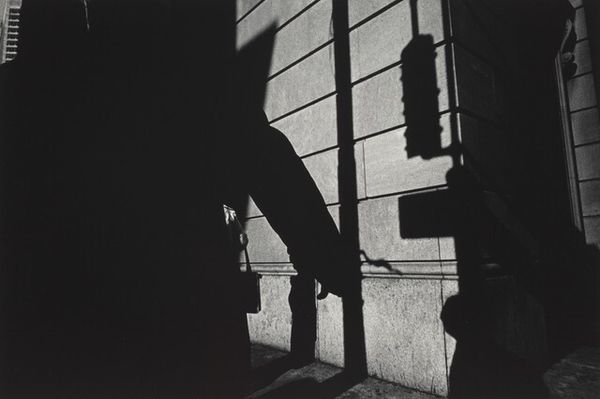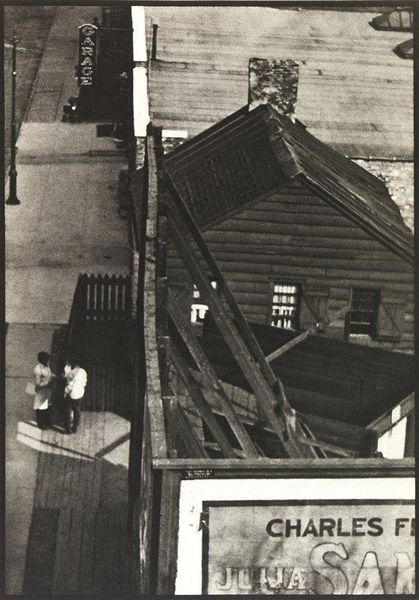
photography, gelatin-silver-print
#
portrait
#
black and white photography
#
black and white format
#
social-realism
#
street-photography
#
photography
#
black and white theme
#
group-portraits
#
black and white
#
gelatin-silver-print
#
monochrome photography
#
monochrome
#
monochrome
Dimensions: image/sheet: 30 × 23 cm (11 13/16 × 9 1/16 in.)
Copyright: National Gallery of Art: CC0 1.0
Curator: Edith Tudor-Hart’s gelatin-silver print, “London,” dating from 1936, captures a scene of striking intimacy and hardship. What grabs you first about it? Editor: Honestly? The precariousness. That dizzying, almost vertiginous angle. It feels like we're spying, perched above, looking down into a hidden world of struggle, resilience, and cramped space. I am guessing a family here, maybe even an orphan home during the interwar years. Curator: That’s precisely the tension Tudor-Hart plays with. She often shot from elevated viewpoints, creating this sense of… removed observation, almost clinical. But within the frame, you feel a deep emotional connection with the subjects. Tudor-Hart, herself, was quite involved with the subjects she photograph. Editor: Right, it's like she’s simultaneously distanced and deeply empathetic. It looks a little staged as a picture – am I completely wrong to feel this way? Curator: Some scholars suggest there's an element of deliberate composition to her "street" photography. She understood the power of imagery to sway public opinion, particularly during the politically charged climate of the 1930s. Her work at the time always was created in accordance to a precise agenda, including recruiting young socialists to the cause. Editor: Ah, the politics of the gaze! I see what you mean. Those eyes looking directly at us. They transform the image. It isn't some objective documentation of poverty. There is intention and engagement here, which gives the shot so much energy and complexity. I mean it feels deliberately constructed. Curator: I agree completely. I always love how she uses light and shadow to add depth and emotion to the images – do you feel it works particularly well here? Editor: For sure. It heightens the contrasts of light and shadow of the poverty captured. Actually this helps reveal the intimacy and the darkness of life with next to nothing! It transforms what we are seeing from mere journalism into a visceral and unforgettable statement about life and art. Curator: Ultimately, her photographs like "London" encourage a reconsideration of who has the right to be seen, how they're seen, and the stories that we need to be telling. Editor: Definitely gives one pause. A single image, but echoes that continue to bounce inside my head for hours, maybe days, afterward.
Comments
No comments
Be the first to comment and join the conversation on the ultimate creative platform.

